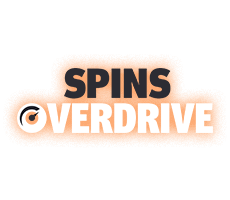How to play
Poker folding: learn when to fold in poker
In this section, we talk about one of the hardest but most important poker skills, folding a good hand, including:
The art of the laydown in poker (poker fold)
Winning with great cards is one thing, but knowing when to make a ‘laydown’ is the real key to consistent success in poker.
To keep you up to speed, when a poker player refers to a 'laydown', they mean folding a hand (poker fold) which could have won. The thing is, though, a strong hand isn't invincible. You could have great potential up until the moment the flop, turn and river are revealed and the new cards create new ways to beat you.
With the shift towards aggressive and looser gameplay, folding a big hand is an art that's dying out. Once upon a time poker players exercised more caution and were less likely to risk the call, because a marginal hand wasn't worth playing. The winning potential can occasionally cloud our judgement and distract us from the signs we ought to be reading so to improve your chances of one day being a winner, perhaps you should accomplish the art of the laydown. Here’s when and how to do it.
Trusting your instincts
You're sitting at a table and you feel that your hand is no good. Now, ‘feel’ is an overused term in poker, so let’s say your subconscious is telling you something. Did you pick up on a facial tick? A slight delay when betting? Doesn’t matter. You should listen to those instincts.
Some people do this naturally with complete accuracy. For most of us, it's a skill you need to work on. Okay, two skills: first, hearing the voice that tells you you're beat; and second, acting on it.
Spotting the danger signs
If you're not good at reading the danger signs, you're not alone. They crop up in the simplest of moves, and can easily be your downfall if you're not quick enough to catch them.
What kinds of moves should you be looking out for? There are some basic moves that count as warning signs (hello check-raises & mini raises).
When you come up against these, your opponent generally has something big, or could well have by the next card. A hand with potential to be the best hand (the nuts) shouldn't be taken lightly. If in doubt about the potential for danger, perhaps you should think back to the moment before the flop. If they call when you expect them to raise (flat-call) and then check-raise on a small to middling flop, there's every possibility there's a pocket pair in their grasp.
Look at the chips. If a player has paid over the odds for a flush or straight draw, maybe even called out of position, they’re doing it for a reason.
If they've called your bets all along, even though you’re projecting a tight table image (you have a reputation for only playing strong hands), chances are they’re feeling very confident, something you need to take seriously.
Doing the maths
Of course, you can also make your decisions easier with some poker science.
The first sum you need to do is simple: add up your chips. If you’re looking a bit short, don’t risk them on anything but a great hand. It might not be fashionable advice, but in poker, it pays not to follow the herd.
The next bit of stat-gathering involves your opponent. What’s their raising range? How much are they betting on a good hand versus a great hand? This will help you read the strength of their cards and stay out of trouble.
Finally, what’s your table position? Semi-decent hands aren’t worth it in the blinds – it’s too easy to get trapped. Remember, a lot of mistakes and difficult decisions are down to calling with a marginal hand pre-flop.
Odds, I call
Pot odds are an extremely important part of judging when to make a good laydown. Basically, it’s the price of your bet, versus the value of the pot. If your chances of winning are the same or more, call. If not, fold.
To explain, when the betting is ending, usually on the river or when the money is going all-in, that is the point you ought to work out your pot odds. The idea is that you would then compare the odds to the chances you have of your hand being good. Maybe comparing them against the range of hands other players could hold would also be advantageous. If the odds are good, you can decide to call. If they're not so good, laying the hand down would be best.
Still confused? Let's imagine you're playing against a predictable player who calls while you bet on a two-pair card combination:
• On the river a flush card arrives, so you check while he bets
• The pot is 7,000 and he bets 3,000, which gives you 3,000 to call. If you won you'd receive 10,000. Your pot odds are 3.333/1 aka 30 per cent.
You have to decide whether your two-pair has a 30% chance of being good or a 30% chance of being bad. If we were to advise you, your best solution in this situation is to laydown against the predictable player. Better safe than sorry.
Powers of reasoning
Making laydowns is a hard thing to do – no one likes to think they're folding the winning hand. And you don’t want to go too far the other way and play scared. So practice these skills, focus on what you’re saving in chips or cash, and you’ll soon gain confidence that you’re doing the right thing when it comes to a poker fold.

